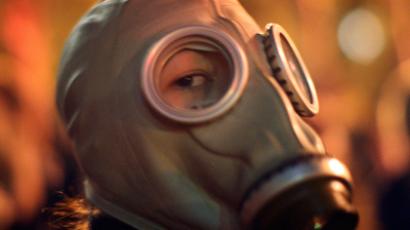US Army spends hundreds of thousands advancing fog-like obscurants

The US Army has given firms three grants to upgrade flare systems used to mask the heat signature of prized fighting machines. The heat-obscuring chemical, used for the past 60 years, has been deemed dangerous to health and the environment.
Three private companies – Lynntech, Inc., Nanotrons and Physical Sciences – will be in charge of developing new countermeasures, to replace weapons that have been accused of releasing harmful copper into the air when a smoke bomb is detonated.The US government will give the firms around $100,000 to complete the task.The “dust clouds”, which aim to impede the ability of heat-obscuring weapons to detect heat signatures, can have adverse health effects on whoever inhales the smoke particles. Most obscurants used today are made from metal particles – often bronze – and have “significant environmental persistence that may pose health hazards,” Wired reports.Ingesting too much copper, which is found in bronze, can cause gastrointestinal health problems and in serious cases lead to liver and kidney damage. Inhaling copper particles can also cause respiratory irritation, according to the Center for Disease Control and Prevention.A study by the National Academies Press found that exposure to the toxic smoke from obscurants causes pulmonary congestion, alveolitis, chronic pneumonia, and lung inflammation. But smoke screens have been used since the 1950’s to allow the US military to hide from missiles. The heat-obscuring chemicals form metallic dust clouds around equipment that emits infrared radiation, masking prized assets such as tanks, planes and other military hardware.Military planes also deploy flares to divert missiles heading their way.“To block infrared, you fill a grenade with bronze flakes and detonate it,” near the object you want to hide, said scientist John Lennhoff, who works for a company hired to develop the obscurant.The US Army is now spending about $300,000 to develop better obscurants, which the government hopes will consist of a less dangerous chemical compound.













